It was a gray September morning at Hong Kong International Airport.
Typhoon Tapa had left me stranded in Macau for three days, but after some time with friends, I was excited to be in the air again. For most travelers at Gate 17, this was an ordinary hop to Shanghai – routine and forgettable. But for me, this was something far more significant.
I was about to board China's COMAC C919, a new, homegrown airliner that had entered service only two years earlier, and one that had carried ambitions reaching far beyond the runway.
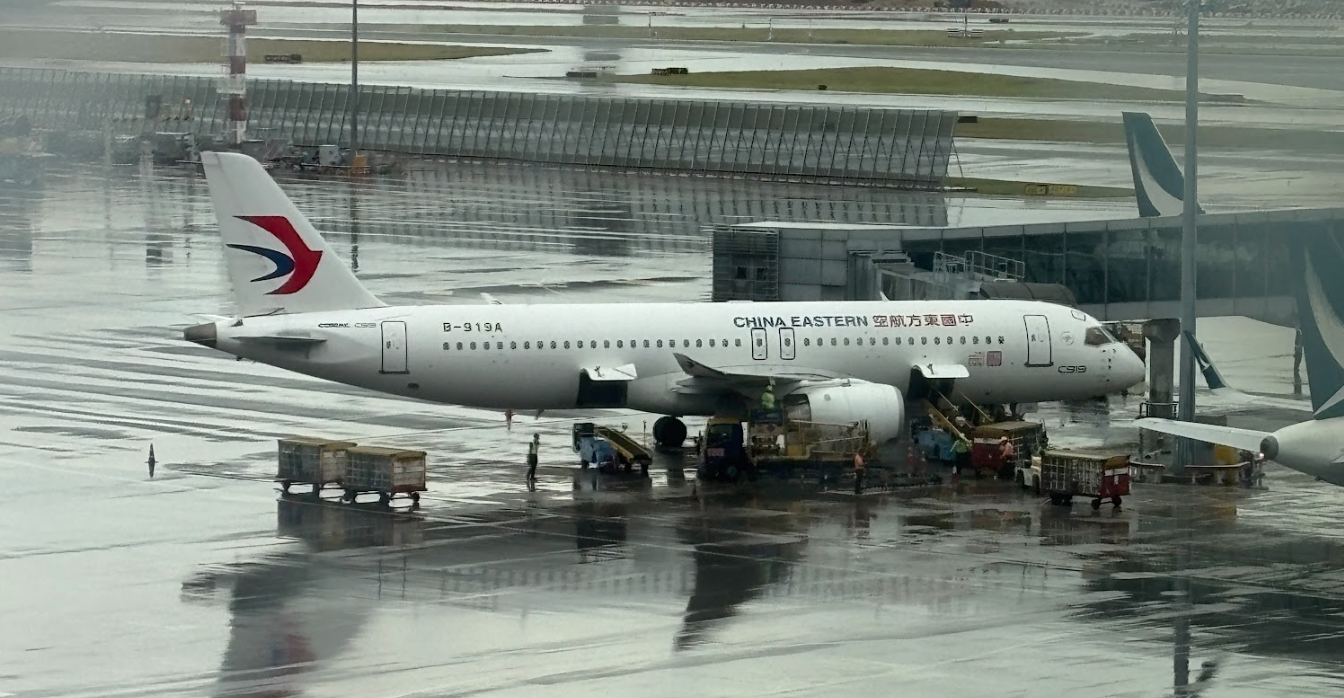
For most passengers, this was just another flight to Shanghai. However, for me, this was no normal flight.
The COMAC C919 is China's domestically-produced short-haul airliner, designed to compete against Boeing and Airbus in an increasingly competitive market. Although the aircraft is still looking to acquire certification outside of China, it is currently being increasingly utilized in regional Chinese routes by Air China, China Eastern, and China Southern.
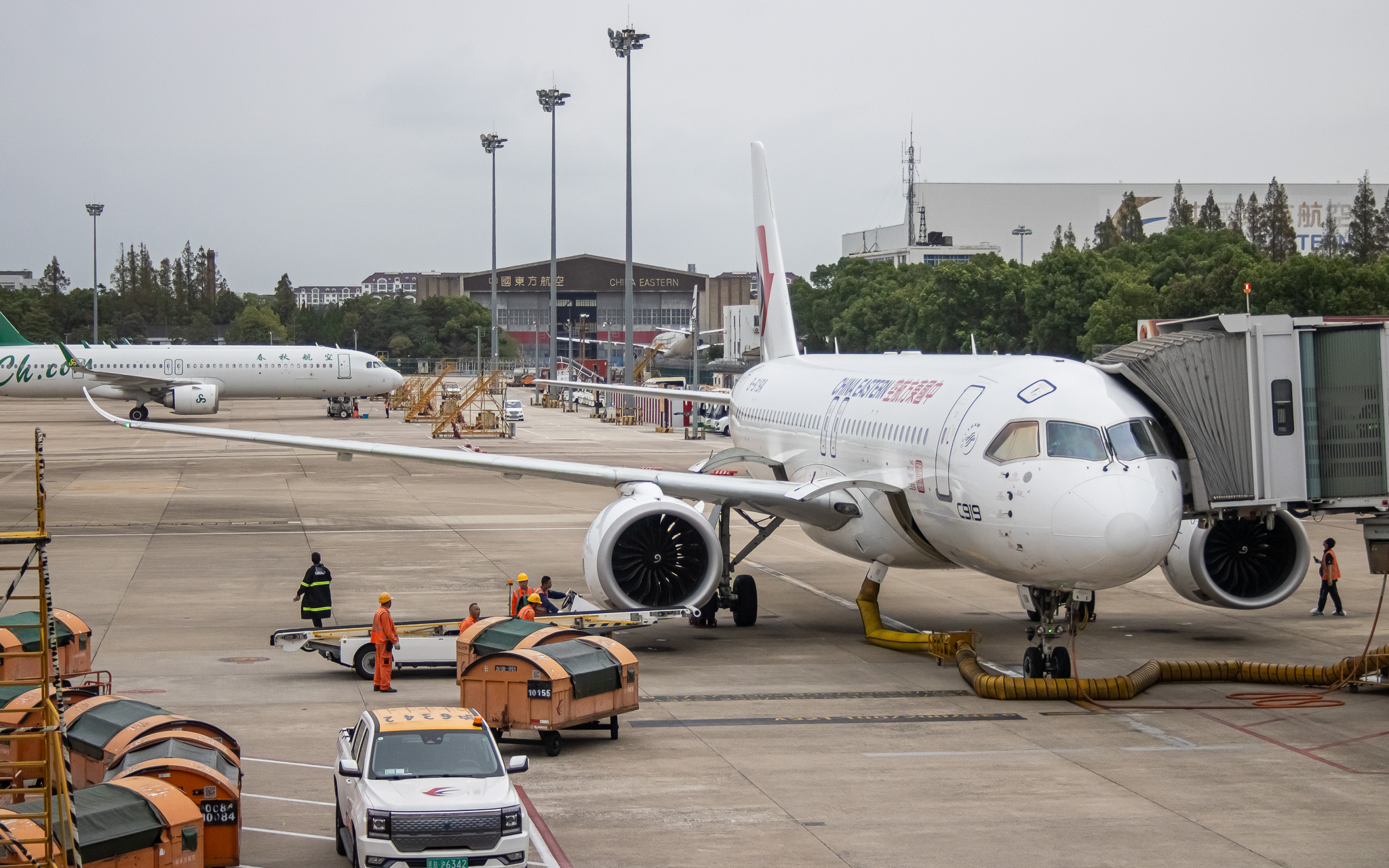
Current COMAC C919 Routes (As of October 2025):
| Airline | Departure | Arrival |
| China Eastern | Shanghai (SHA) | Chengdu (TFU) |
| China Eastern | Shanghai (SHA) | Guangzhou (CAN) |
| China Eastern | Shanghai (SHA) | Taiyuan (TYN) |
| China Eastern | Shanghai (SHA) | Chongqing (CKG) |
| China Eastern | Shanghai (SHA) | Xi'an (XIY) |
| China Eastern | Shanghai (SHA) | Beijing (PEK) |
| China Eastern | Shanghai (SHA) | Beijing (PKX) |
| China Eastern | Shanghai (SHA) | Shenyang (SHE) |
| China Eastern | Shanghai (SHA) | Wuhan (WUH) |
| China Eastern | Shanghai (SHA) | Xiamen (XMN) |
| China Eastern | Shanghai (SHA) | Shenzhen (SZX) |
| China Eastern | Shanghai (SHA) | Hong Kong (HKG) |
| China Southern | Guangzhou (CAN) | Taiyuan (TYN) |
| China Southern | Guangzhou (CAN) | Changsha (CSX) |
| China Southern | Guangzhou (CAN) | Shanghai (SHA) |
| China Southern | Guangzhou (CAN) | Zhengzhou (CGO) |
| China Southern | Guangzhou (CAN) | Xi'an (XIY) |
| China Southern | Guangzhou (CAN) | Wuhan (WUH) |
| China Southern | Changsha (CSX) | Beijing (PKX) |
| Air China | Beijing (PEK) | Chongqing (CKG) |
| Air China | Beijing (PEK) | Hangzhou (HGH) |
| Air China | Beijing (PEK) | Chengdu (CTU) |
| Air China | Beijing (PEK) | Wuhan (WUH) |
| Air China | Beijing (PEK) | Shanghai (SHA) |
Today, I had the pleasure of flying on board B-919A, the first commercial C919 ever to be produced. Having flown on Airbus A320s and Boeing 737s on a near-weekly basis for the last four years, I was eager to see how the C919 would compare. Could China really build a world-class passenger jet?
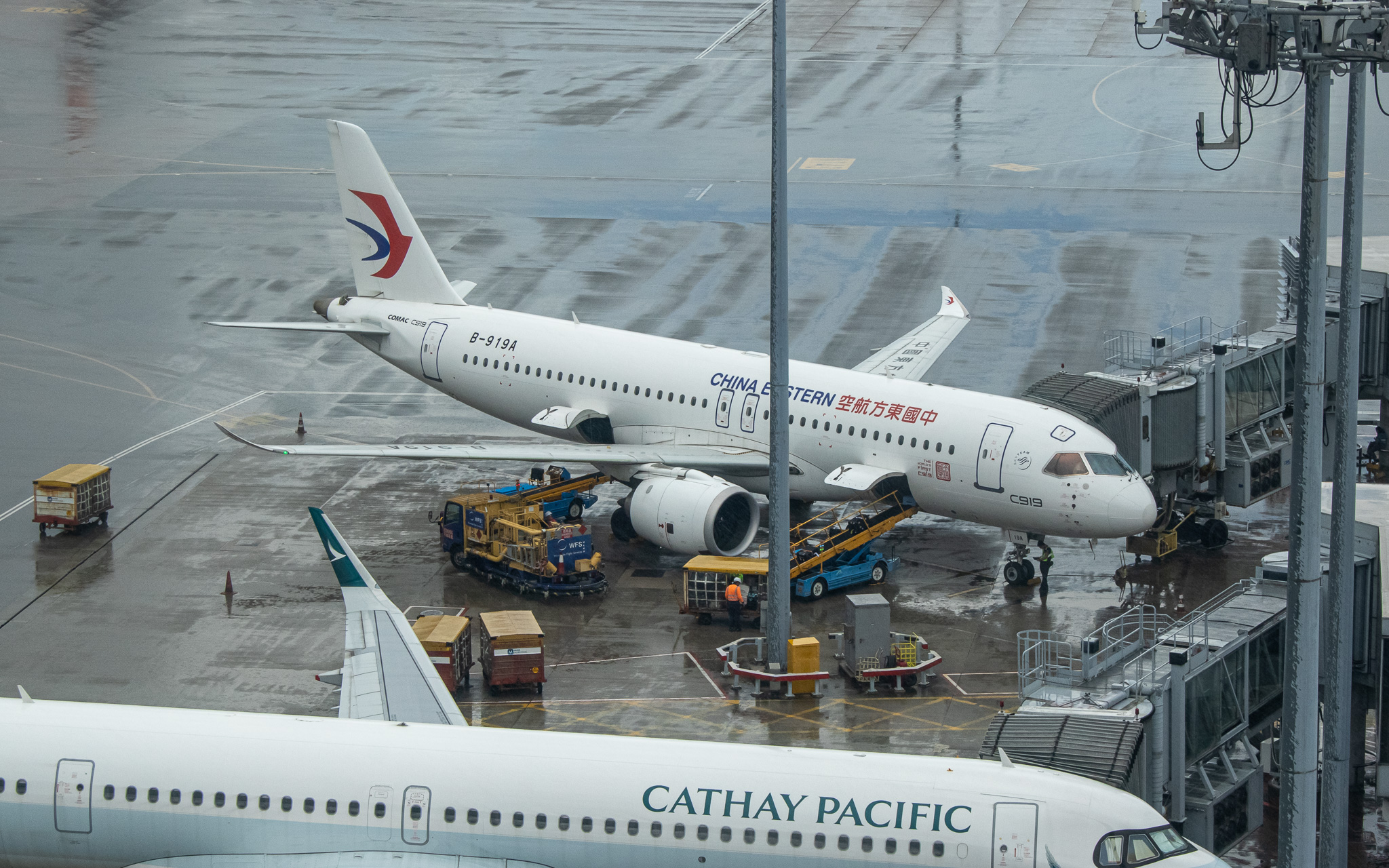
Flight Details:
Flight number: MU722
Date: September 9, 2025
Departure: Hong Kong (HKG) at 12:05 pm
Arrival: Shanghai (SHA) at 2:40 pm
Flight time: 2h 35m
Aircraft: COMAC C919-100STD
Seat: 37A (Economy)
Onboard the C919
On the inside, the C919 looked just like its competitors: Two rows of business class in a 2-2 configuration and 26 rows of economy class in 3-3 cabin layout. The overhead bins were noticeably small, yet still workable. I remember on the 737, when the overhead bins could easily fit my carry-on with ample space above. Today, my bag barely fit.
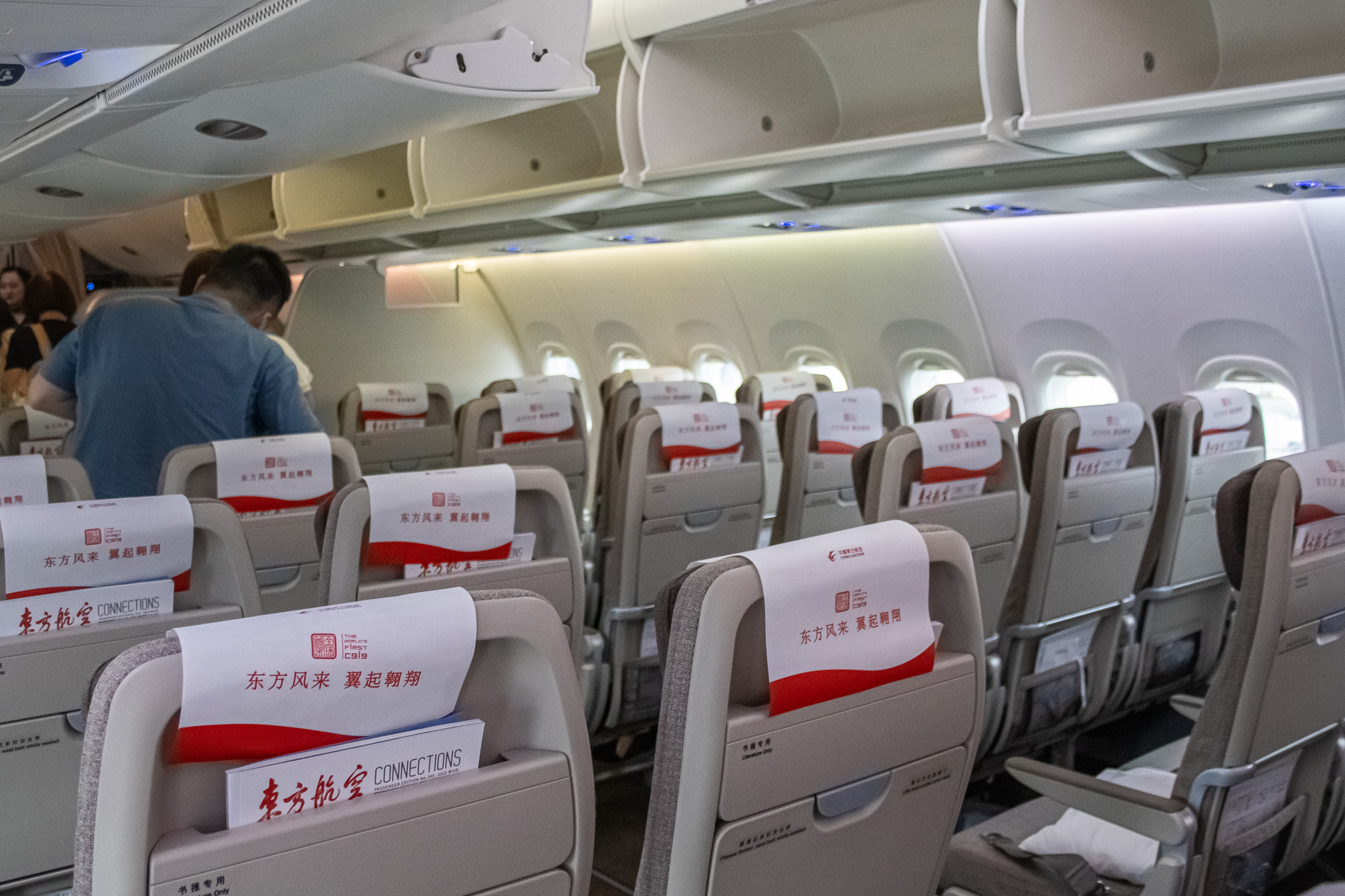
China Eastern's C919s provide an economy pitch of 30 inches, with a width of 18 inches. The seats are thin, a practice that has become increasingly common for airlines looking to maximize passenger density. For reference, Boeing 737s in the United States have an average legroom of 30 to 32 inches, with an average width of approximately 17 inches. COMAC was not far off the mark.
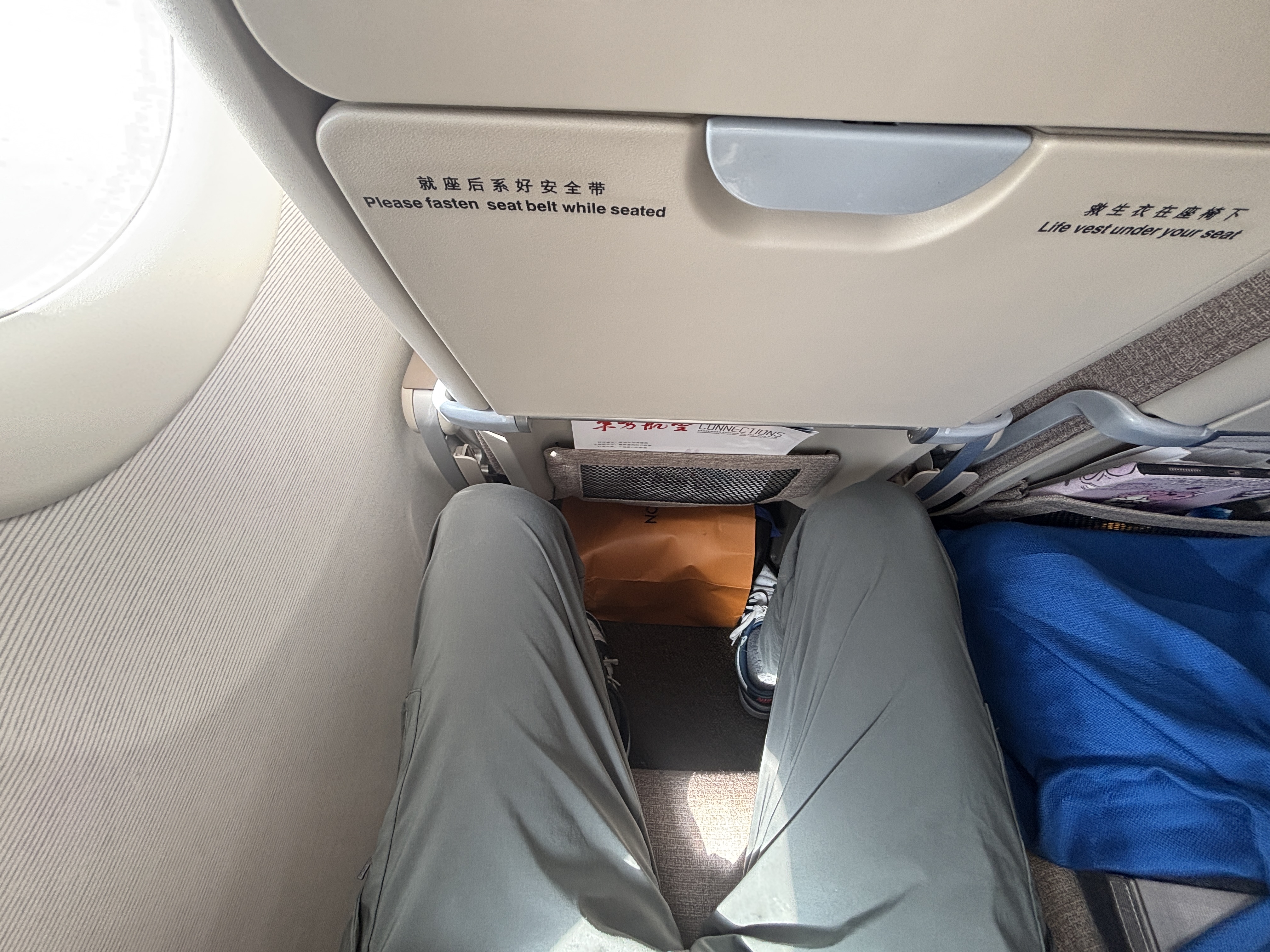
During the safety briefing, flight attendants drew attention to the aircraft, noting we were "flying on the COMAC C919, China's domestically produced commercial aircraft." The airline's pride in the aircraft even extended to the aircraft's decoration, with antimacassars written "The World's First C919."


I'm not sure if this was exclusive to B-919A, but it was a cool touch, nevertheless.
The major difference I noticed on the C919 was the noise. Shortly before takeoff, I was asked by a flight attendant to remove my headphones (for safety, perhaps?) but, even when listening "naked," I could barely hear the roar of the engine. The aircraft was surprisingly quiet.
Besides the noise, the flight felt like any other: there was a full meal service, in-flight entertainment above every several rows, and a refreshment service, where flight attendants served drinks in cups labeled "The World's First C919."
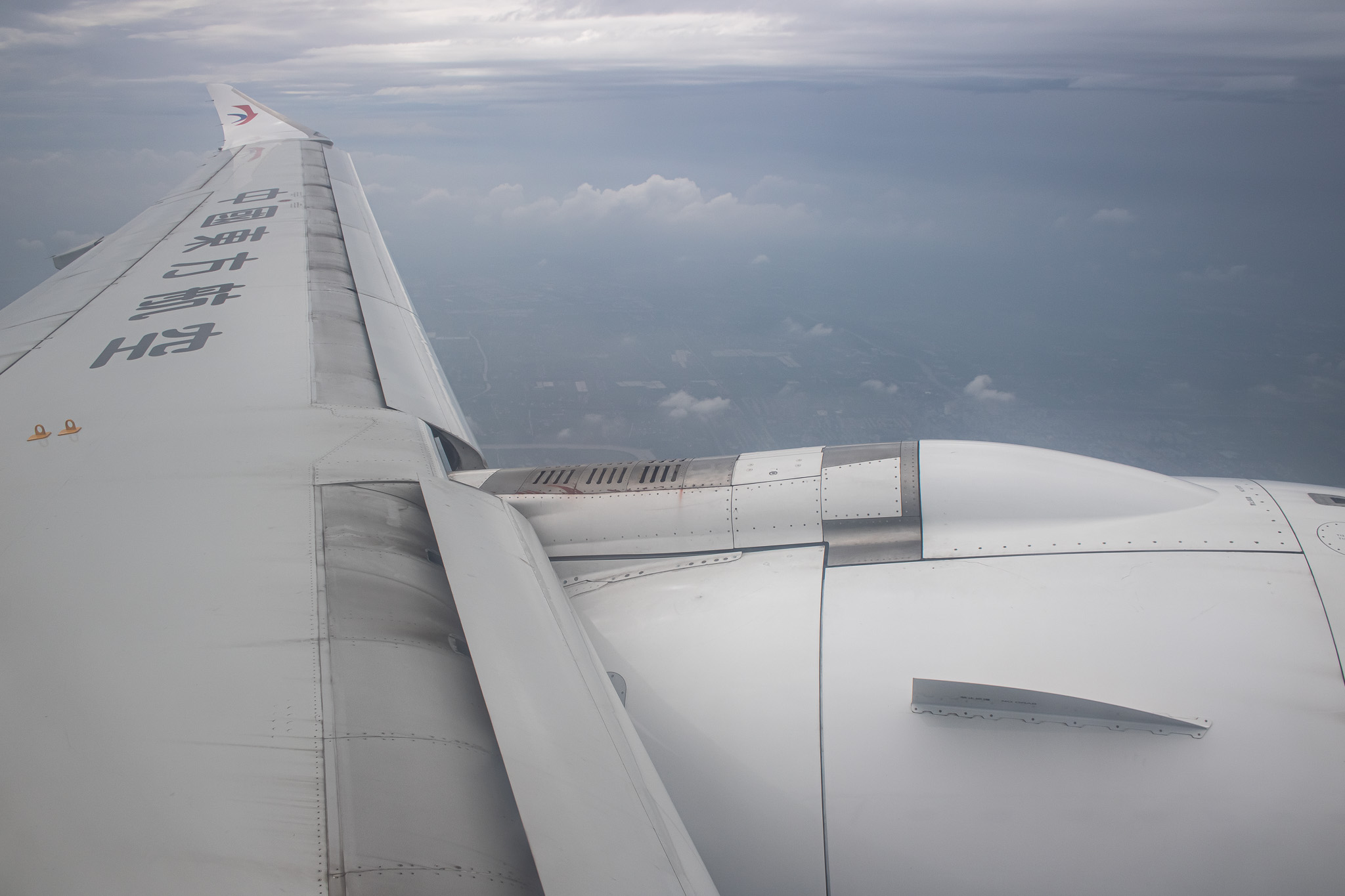


At 2:34 pm local time, approximately 2 hours and 4 minutes after takeoff, we arrived in Shanghai-Hongqiao. Overall, I enjoyed the flight, and I think the C919 is a very strong contender in the short- and medium-haul travel market, at least from a passenger experience perspective.
The Future of the C919
Although the C919 may not yet rival Airbus or Boeing globally, it represents something bigger: the dawn of a multipolar aviation world. Key players are forced to strategically innovate as smaller manufacturers fight to grow their market share.
Despite initial goals of 75 deliveries in 2025, COMAC was forced to reduce this goal to 25 aircraft due to operational challenges. Additionally, the C919's reliance on Western components, such as its engines — the CFM LEAP-1C — introduces additional logistical challenges within its supply chain. However, China is working to develop its own domestic engine, the ACAE CJ-1000A, which COMAC plans to utilize on future C919s.
| Airline | C919s in Operation | C919s Parked | C919s on Order |
| Air China | 4 | 0 | 1 |
| China Eastern | 10 | 1 | 1 |
| China Southern | 6 | 0 | 1 |
| COMAC | 6 | 1 | 1 |
Table data updated as of October 2025.
With orders increasing, COMAC is planning on building a second C919 manufacturing plant, allowing it to meet the demand of current and anticipated orders. According to media outlet Science and Technology Innovation Board Daily, the site for this second plant has been confirmed in the "Lin-gang Special Area in Pudong, Shanghai, with a total construction area of 300,000 square meters." This is approximately 3.2 million square feet, approximately three-quarters the size of Boeing's factory plant in Everett, Washington.
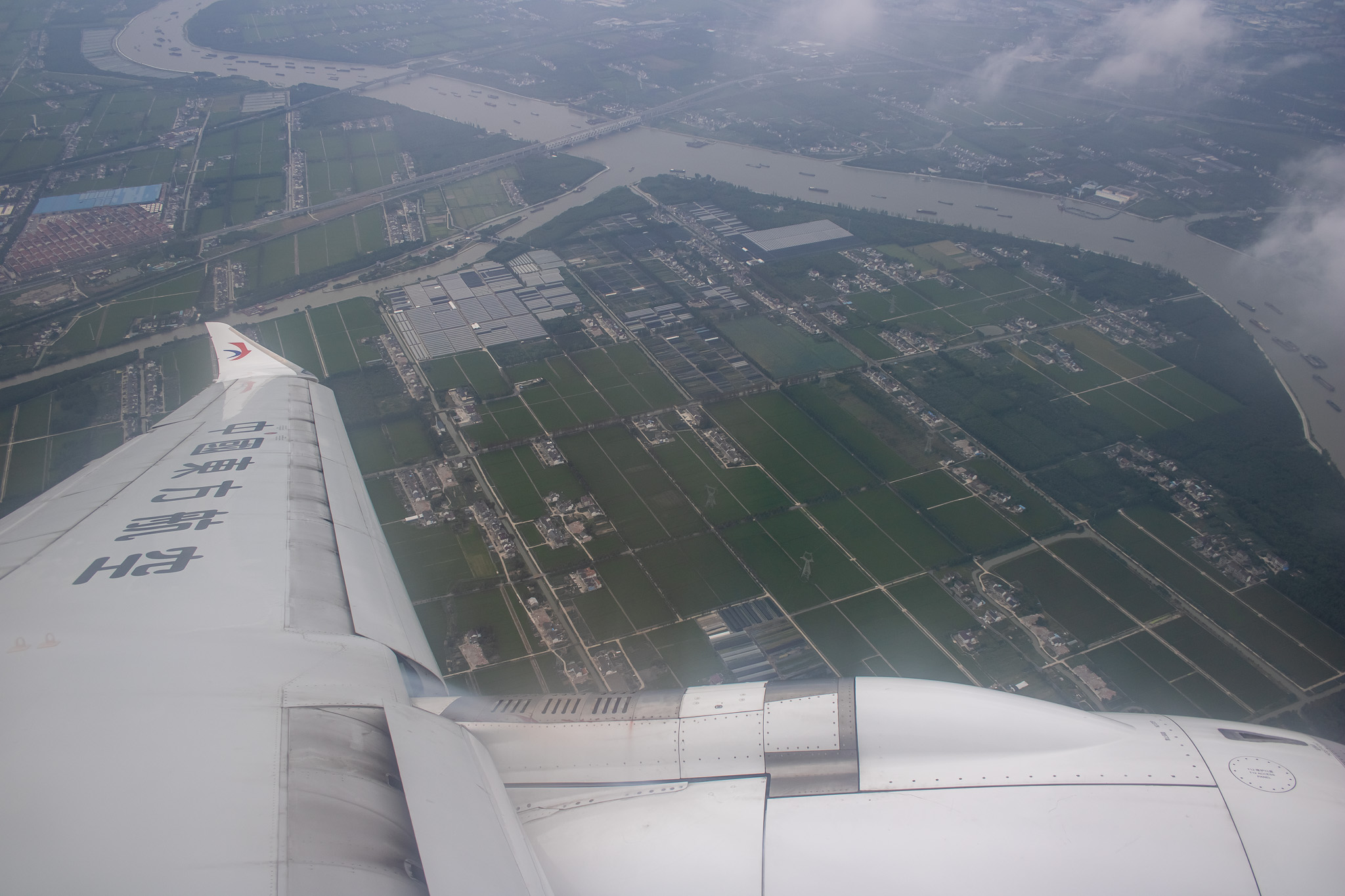
The outlet also reported, "Once the project is completed, it will meet the future mass production needs for the C919." The plant is set to open in 2027.
For now, the C919 is restricted to flying within China. However, according to the South China Morning Post, the Civil Aviation Administration of China (CAAC) has been in talks with the European Union Aviation Safety Agency (EASA) to explore certification in the EU. Members of the EASA even completed an on-site inspection of the C919 at Shanghai Airport in July. These strides are promising for the future of the aircraft.
Niger Air International Set to Take Off in 2026 » Beijing's Boeing: What It's Like Onboard China's COMAC C919 » EgyptAir Looks to Add Chicago, Los Angeles Flights in 2026 »
Comments (0)
Add Your Comment
SHARE
TAGS
TRIP REPORTS COMAC C919 COMAC C919 Shangai Hong Kong FlightRECENTLY PUBLISHED
 How to Study Aerospace Engineering and Succeed as a University Student
Learn how to study aerospace engineering effectively, manage your workload, and succeed as a student with practical strategies and expert guidance.
INFORMATIONAL
READ MORE »
How to Study Aerospace Engineering and Succeed as a University Student
Learn how to study aerospace engineering effectively, manage your workload, and succeed as a student with practical strategies and expert guidance.
INFORMATIONAL
READ MORE »
 EgyptAir Looks to Add Chicago, Los Angeles Flights in 2026
Egyptair this week filed with the U.S. Department of Transportation (DOT) to request authority for new non-stop flights between Cairo International Airport and two additional destinations in North America. The national flag carrier, a member of the prestigious Star Alliance, seeks to introduce service to Los Angeles International Airport (LAX) in May 2026 and Chicago O’Hare International Airport (ORD) in June 2026.
ROUTES
READ MORE »
EgyptAir Looks to Add Chicago, Los Angeles Flights in 2026
Egyptair this week filed with the U.S. Department of Transportation (DOT) to request authority for new non-stop flights between Cairo International Airport and two additional destinations in North America. The national flag carrier, a member of the prestigious Star Alliance, seeks to introduce service to Los Angeles International Airport (LAX) in May 2026 and Chicago O’Hare International Airport (ORD) in June 2026.
ROUTES
READ MORE »
 Inside the Cockpit: Interviews with Young Pilots Getting Their Wings
If you want to understand the new generation of aviators, listen to their stories: the obstacles they face, the ways they shortcut common problems, and the smart moves that actually help them earn their wings.
INFORMATIONAL
READ MORE »
Inside the Cockpit: Interviews with Young Pilots Getting Their Wings
If you want to understand the new generation of aviators, listen to their stories: the obstacles they face, the ways they shortcut common problems, and the smart moves that actually help them earn their wings.
INFORMATIONAL
READ MORE »




